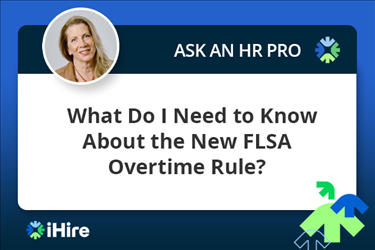- Employer Resources
- |
- Last Updated: June 25, 2021

10 Surefire Ways to Sabotage Your Referral Program
It’s no surprise that employee referral programs (ERPs) are the most effective means of hiring. After all, your employees have a clear understanding of your unique roles and experience requirements, the organizational and business environment in which you operate, and cultural fit factors. As a result, referrals yield the highest-quality hires in shorter timeframes with referred candidates consistently outperforming their counterparts hired through other channels.
So, it’s pretty clear that if you don’t already, you should put some time and effort into building a quality program. But just because you build it does not mean they will come. Here are 10 surefire ways to sabotage your referral program along with tips for avoiding them:
- Lack of executive support. If your leaders are not engaged with your referral program, how can you expect your employees to be? Ensure that senior management understands the business case for referrals (high ROI, higher applicant quality, longer retention, faster hiring, lower costs, etc.) so that they may set the tone. Take the opportunity to highlight program successes in executive team meetings.
- No data. Ever heard the phrase, “In God we trust; all others bring data?” Continued support for your ERP will be dependent upon the success of the program. How can you know what works and what doesn’t without data? It’s critical that you compile key metrics such as retention rates, termination rates, best referral sources, and best campaigns, among others. You also need to gauge the quality of each hire (possible measures could include: likelihood of rehire after six months/one year, performance review scores, KPIs, etc.).
- No focus. Focus your efforts on hard-to-fill positions and on the “right” hires. Generally, your top-performing team members will make the best referrals sources. Solicit referrals from these employees. Also focus on the “right” positions. This includes mission-critical jobs, positions that generate revenue, hard-to-fill and senior-level positions, jobs where innovation is required, and jobs that have historically had successful referral rates.
- Putting too much emphasis on the almighty dollar. Be careful about placing a lot of importance on cash incentives or any rewards, since you want your staff to focus on making the company better. In fact, most employees don’t make referrals for the money; most refer for the good of the team and because they want to work alongside the best coworkers. Emphasize this in your program marketing along with the fact that it’s every associate’s duty to be a recruiter for the company.
- Not educating employees. Many staff members simply don’t know where to look for candidates and how to build relationships with them. Share information from your most successful referrers. Further, make sure your team is clear on the company’s mission, vision, and values. If they don’t know these things, how can they advocate for you? Finally, ensure your employees are aware of the positions for which you are recruiting, as well as the skills and experience that are important. It may be helpful to create a candidate profile that includes technical and soft skills so everyone knows exactly what you are looking for.
- “Spamming” your employees. If you send continuous emails to your entire staff requesting referrals, it will result in fatigue and no referrals. You want to proactively approach the “right” employees (remember that top performers make the best referrers) who are likely to make relevant referrals for specific jobs. Consider trying a number of different approaches. Two ideas to try might be requesting referrals as part of the new hire onboarding process or the “Three Names” strategy where you ask top performers to nominate three individuals in different categories such as “Most Talented,” “Most Creative,” “Best Manager,” etc.
Create Your Account Today
- Focusing only on employees. There’s a whole world outside of the confines of your company’s employees. Encourage non-employee referrals from company alumni, partners, customers, vendors, retirees, and anyone else who is interested in the success of your company. Consider a “Friends and Family” campaign where you pay friends and family $250 for each successful hire.
- Slow response and/or poor communication. Make sure your employees’ referrals don’t disappear into the resume black hole (the biggest gripe of job seekers today). Referrals and the employees who referred them should be given extra special attention. Failure to respond quickly (within a few days) will result in lost credibility for you and your company. Also make sure you provide feedback to ensure continued high-quality referrals.
- Withholding rewards. Some companies have policies that referral bonuses are not to be paid until the referral, once hired, has completed a probationary period or a certain amount of time has passed. This practice flies in the face of desired behavior and rewards; pay the bonus immediately upon the referral starting. If you are worried about the quality of hire then those issues should be addressed in your hiring and selection processes.
- Not making it easy. Don’t forget the KISS principle (Keep it Simple, Stupid) and make it as easy as possible for your employees to make referrals. Needless complexity will yield fewer (if any) referrals. You should have a straightforward process with clear expectations. Educate your employees on your referral procedures and hiring practices. Provide your staff members with the tools to be successful: give them templates, referral cards, and elevator pitches to help them appeal to candidates. Finally, you have to give your staff members an easy way to check on the status of their referrals. Consider a tool or mobile app where employees can submit their referral, track the candidate’s progress, and see the date they will get their bonus.
Referrals are the most effective way to hire top-quality candidates. Avoid these 10 mistakes and you’ll be swimming in qualified referral candidates!

Originally Published: September 27, 2016




